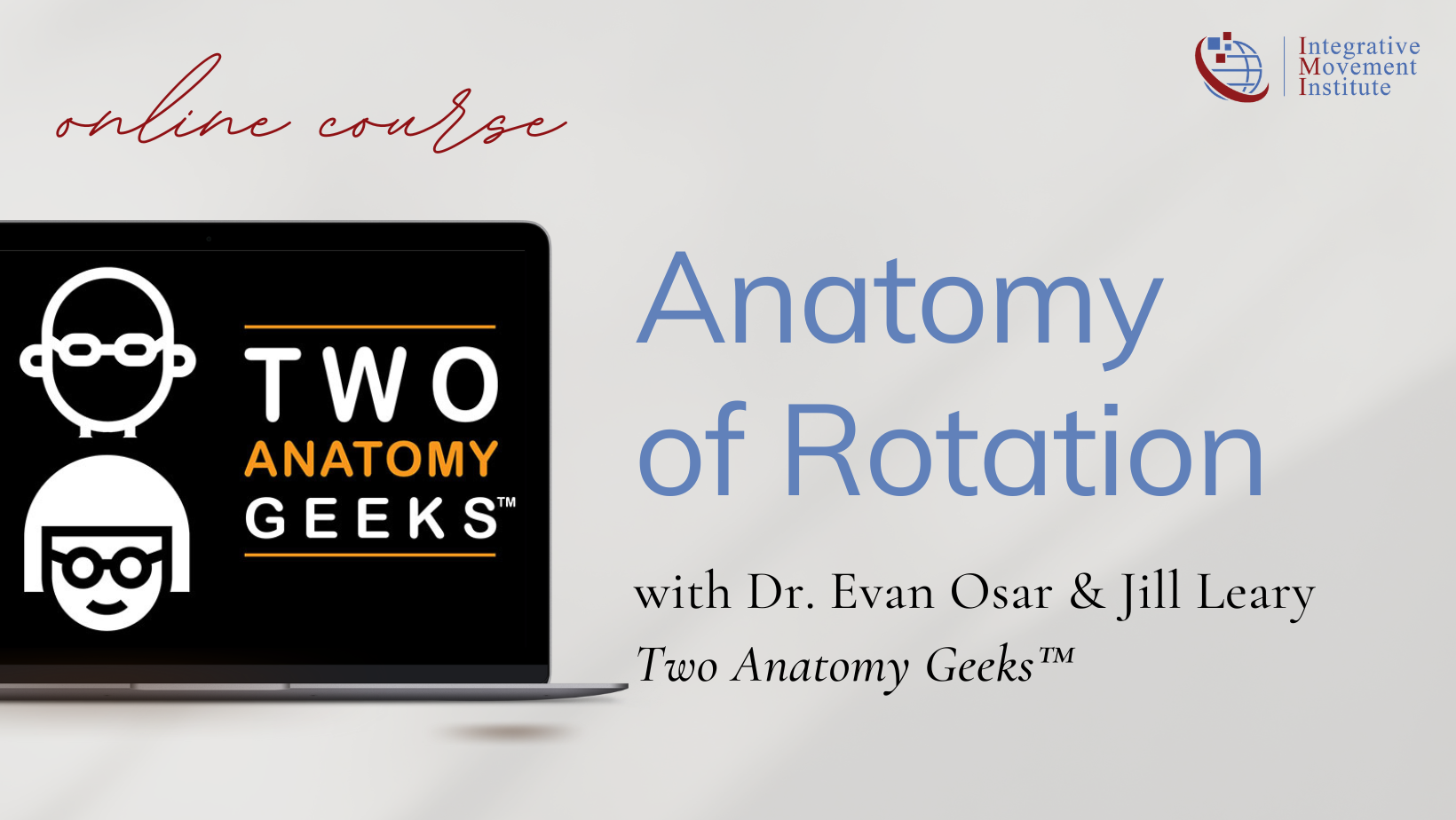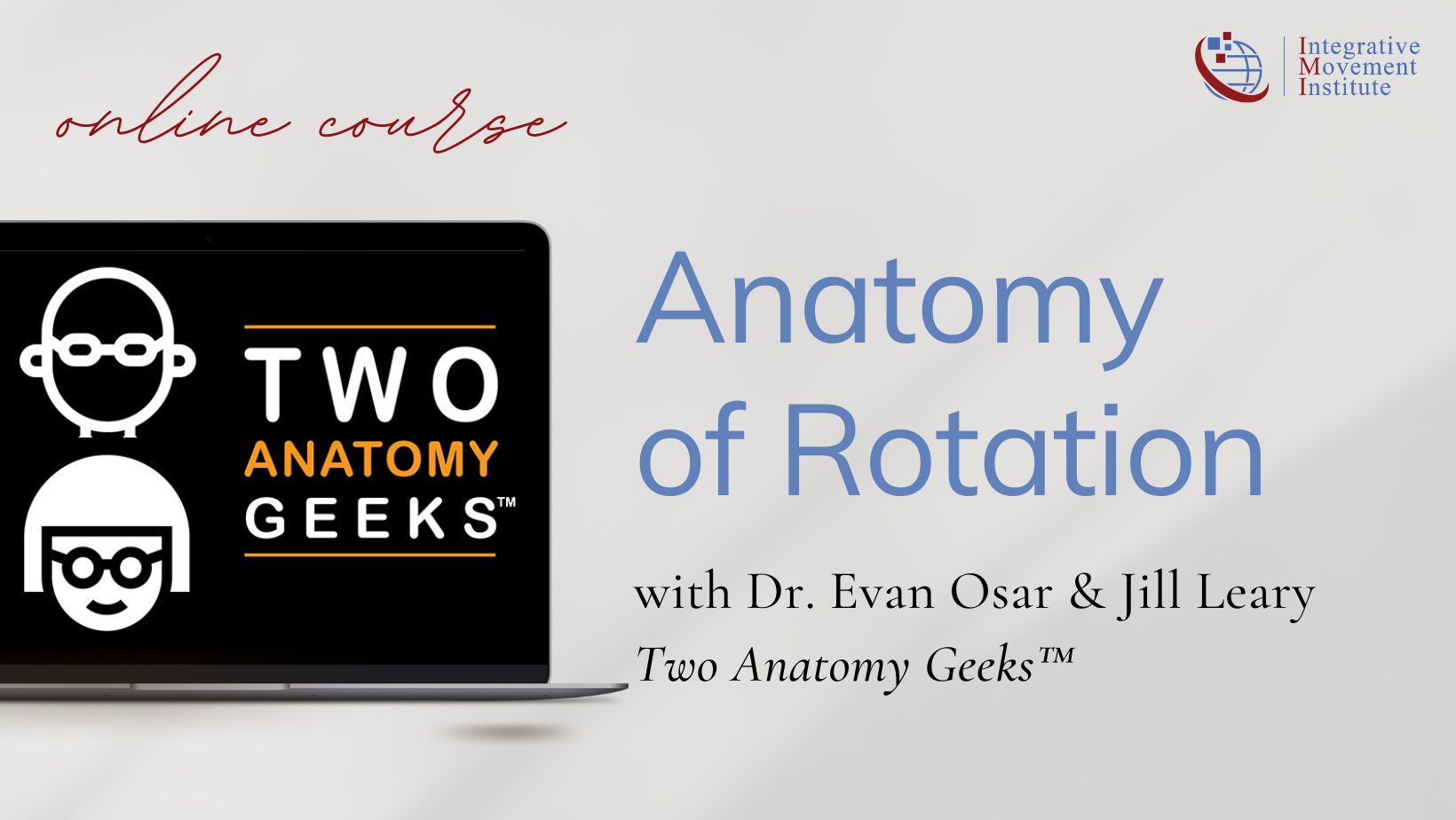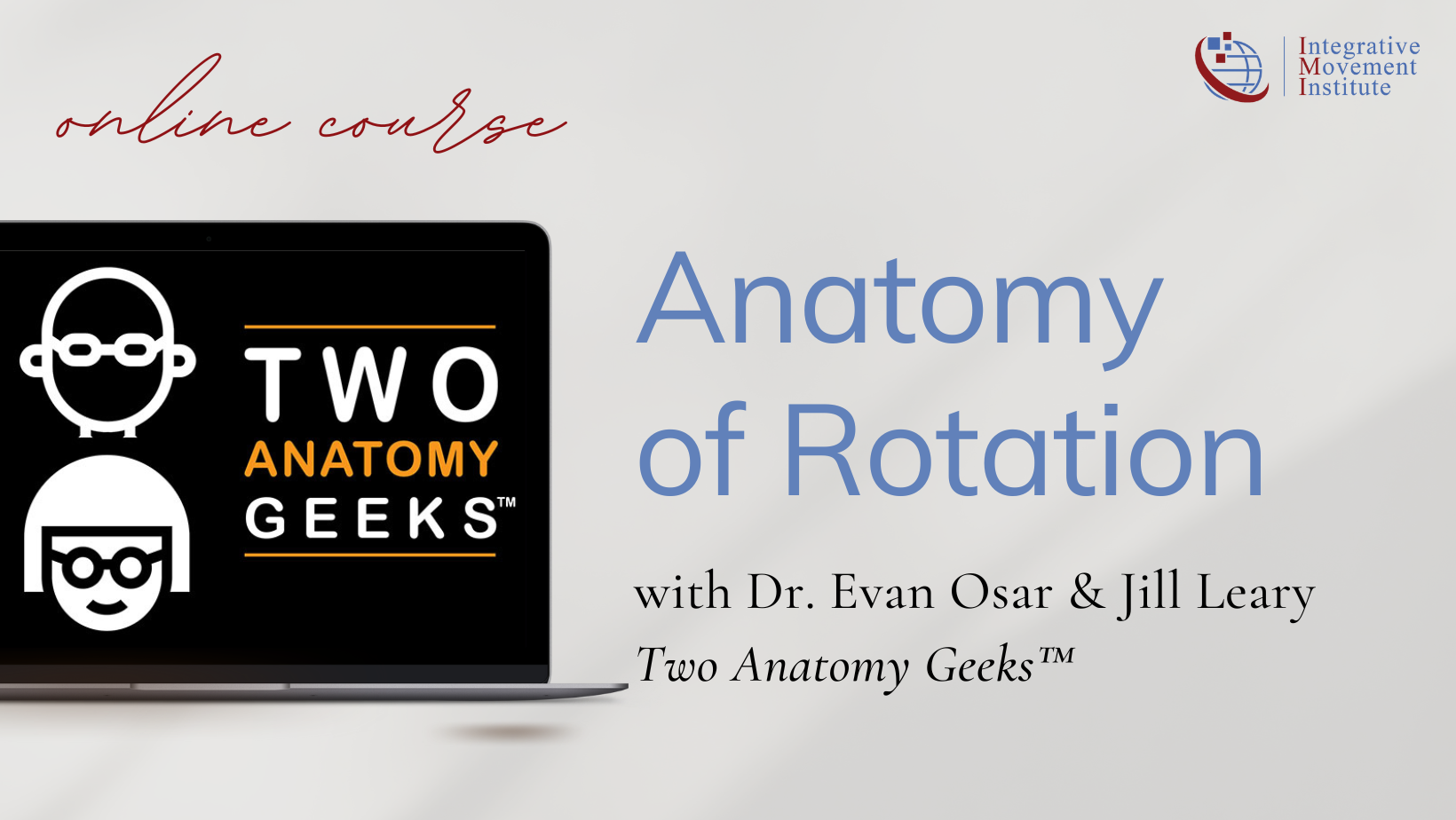Rotation Training: The Most Effective Exercise Patterns
Rotation Training: The Most Effective Exercise Patterns
The two best exercises and best ways to incorporate rotation training are pushing and pulling patterns. They are the most effective ways of improving rotation.
Control of Thoracic Rotation
Foot mobility and knee internal rotation - the link to common issues.
Foot mobility and knee internal rotation - the link to common issues.
Dr. Evan Osar discusses the link between foot mobility and knee rotation. In the brand new episode of Two Anatomy Geeks™, you’ll discover:
✅ anatomy of knee rotation and how ankle and foot stiffness impacts function
✅ assessment and corrective exercise to improve rotation of the lower extremity
✅ apply information to functional exercise for the lower extremity.
Click on the image above to purchase!
When you enroll, you’ll receive access to the first 2 episodes of the series. 🤓🧠🤓 Two Anatomy Geeks™ - the most fun you’ve had learning and applying your anatomy knowledge.
Retract the scapula when doing pulling patterns with individuals who present with the forward shoulder posture?
Got clients with forward shoulder posture? Should you retract the scapula when doing pulling patterns with individuals who present with the forward shoulder posture?
Dr. Osar discusses and shares his point of view in this weeks Insider.
If you’re looking for more, check out this series on Rotation!
Part 2 focuses on Forward Shoulder:
✅ Anatomy of the forward shoulder, what creates and what inhibits optimal shoulder rotation and why loss of mobility leads to the forward shoulder posture
✅ how to easily assess and improve - and maintain - shoulder rotation
✅ how to integrate rotation training into your current training programs to help your clients improve stability, strength, and functional activities.

CLICK HERE TO PURCHASE THIS SERIES!
Focus on Shoulder Internal Rotation
Why focus on shoulder internal rotation with your clients with forward shoulder posture? The forward shoulder is a common postural compensation when an individual has compromised internal rotation.
Dr. Evan Osar of Two Anatomy Geeks™️ discusses there are significant changes in shoulder rotation when you respect alignment, breathing, and control.
April 1st is the second part in the series of Two Anatomy Geeks™️! Dr. Evan and Jill Leary will be sharing:
✅ what creates and what inhibits optimal shoulder rotation and why loss of mobility leads to the forward shoulder posture
✅ how to easily assess and improve - and maintain - shoulder rotation
✅ how to integrate rotation training into your current training programs to help your clients improve stability, strength, and functional activities.
🤓🧠🤓 Two Anatomy Geeks™ is the most fun you’ve had learning and more importantly applying your anatomy knowledge.
CLICK HERE TO PURCHASE THIS SERIES
See you Saturday at 9:00am CST. Sessio...
Learn the 3 Keys to Optimal Roation
What is the most important movement pattern to improve balance, walking, and sports performance?
If you answered rotation, you’re spot on.
Rotation is key to life, walking, and sports. The loss of rotation leads to deleterious impacts on bone density, muscle mass, and independence.
3 keys to rotation:
🔑1. Align thoracopelvic cylinder
🔑2. Rotate on an axis
🔑3. Use corrective exercise patterns to set up quality of motion.
Use integrative movement to develop competency and strength. Use power to develop dynamic control .
Coming in one week: Anatomy of Rotation with Two Anatomy Geeks

CLICK HERE TO PURCHASE!
Use Coupon Code ROTATION50 to save 50% (through March 17th), CEUS available as individually webinars in this 3-part series.
Optimal Rotation is Key To Fundamental Movement Patterns
What movement will help your client’s balance, their walking, and their ability to succeed at most sports?
Rotation. Optimal rotation is one of the fundamental movement patterns required for walking, running, and most sports. And with injury, surgery, and over-training, rotation is one of the first movements to be compromised.
Dr. Osar discusses the factors that contribute to rotation and he previews the upcoming brand new series of Two Anatomy Geeks™️, Anatomy of Rotation.




